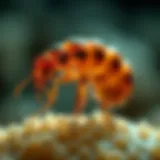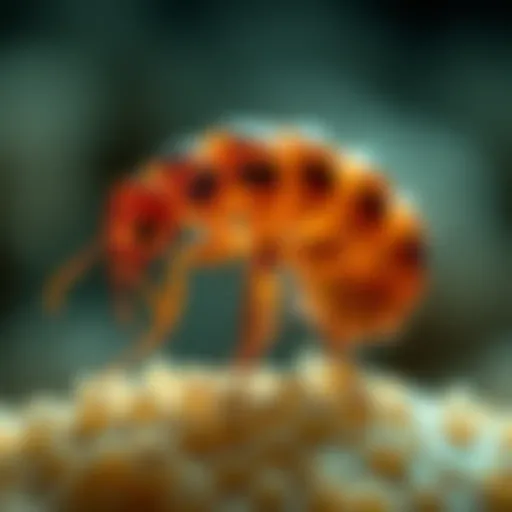DIY Stink Bug Trap: A Guide for Homeowners
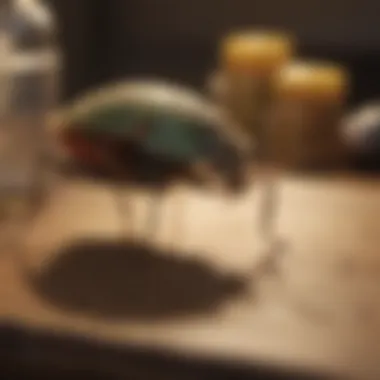

Intro
Dealing with stink bugs can feel like battling a small army. As the weather warms up, these little nuisances seem to invade homes, leaving homeowners frustrated and searching for effective solutions. In this guide, we’ll talk about why it’s essential to understand stink bugs, how to identify them, and what you can do to keep your home pest-free using a homemade stink bug trap. Let’s take a closer look at the intricacies of this problem, starting with pest identification.
Pest Identification
Identifying stink bugs is the first step before embarking on a trapping mission. These insects are often recognized by their distinctly shield-like shape and can vary in color from brown to green.
Detailed descriptions of common pests
Stink bugs, especially the brown marmorated stink bug, have a flat back and measure about 1 to 1.5 centimeters long. When disturbed, they release a foul odor, which gives them their name and is a clear indicator of their presence. Unlike other pests, stink bugs do not bite or sting. However, they can damage plants, which makes them a serious concern for gardeners.
Signs and symptoms of infestations
Here are a few telltale signs that stink bugs have invaded your space:
- Visible Presence: Spotting one or more stink bugs in your home or around your garden is a clear indication.
- Foul Odor: The aroma released when they feel threatened or are squished is a signature sign.
- Damage to Plants: If your plants show signs of discoloration or wilting, it could be due to stink bugs feeding on them.
These signs and descriptions are crucial for recognition, so you can effectively tackle the problem before it spirals out of control.
Prevention Strategies
Preventing stink bugs from entering your home should be an essential part of your management approach. Every homeowner should take active steps to minimize the chance of an infestation. Here are effective strategies to consider:
Home maintenance tips for pest prevention
- Seal Cracks and Openings: Close up gaps around doors, windows, and any other potential entry points.
- Maintain a Clean Yard: Remove debris like leaves and tall grasses where stink bugs like to hide.
- Control Outdoor Lighting: Bright lights attract bugs. Using yellow bulbs can help lessen the number of pesky critters.
Natural deterrents and barriers
- Use essential oils: A mix of water and certain essential oils, like peppermint or neem, can repel stink bugs. Spray this around entryways.
- Incorporate diatomaceous earth: Sprinkling it around the perimeter of your home can create a barrier that is safe for pets but lethal to bugs.
Treatment Options
If prevention doesn't manage to keep stink bugs out, don't fear — there are treatment options available. You can choose between chemical and natural methodologies. Here’s a breakdown:
Overview of chemical vs. natural treatments
Chemical treatments can be effective, but many homeowners prefer natural alternatives due to concerns about chemical residues. Each has its place in pest control, but for a household looking to manage pests without harsh chemicals, DIY natural solutions often come recommended.
Step-by-step guides for DIY treatments
- Plastic Bottle Trap: Cut the top off a plastic bottle, flip it upside down, and add soapy water. The smell will attract the stink bugs, and they’ll get trapped.
- Soap Solution: Mix water with a few drops of dish soap and spray directly on stink bugs. This traps them and suffocates them.
With these approaches and tips in hand, you can tackle the stink bug issue head-on.
"The best tactic is often a multi-faceted one where you engage with prevention and treatment side by side."
After you’ve amassed this knowledge, the next step is to construct your own effective trap, which we’ll cover extensively in the following sections.
Understanding Stink Bugs
Understanding stink bugs is crucial for anyone looking to effectively manage their pest situation. These unique insects can quickly turn your cozy home into a heated battleground. By taking time to learn about stink bugs—how they operate, where they hang out, and what makes them tick—you'll be in a far better position to design your own traps and give those annoying critters the boot.
Biology and Behavior
Stink bugs, particularly the brown marmorated stink bug, are characterized by their shield-like shape and distinct markings. They possess a strong odor, which is a key defensive mechanism. When feeling threatened, they release an unpleasant scent that can linger, making them even more undesirable to homeowners. These bugs are generally nocturnal, preferring to come out when it’s cool and dark. They’re sneaky, hiding in crevices during the day and prowling for food at night. This behavioral trait is particularly relevant when it comes to trapping them—you want to time your traps to catch them off guard.
Stink bugs primarily feed on the sap of plants, causing damage to gardens and crops. When there's a plentiful food source, you can bet they'll multiply like rabbits. You'll want to identify any potential food sources in your garden or yard that might be attracting them. Understand that your plants are just as appealing to these pests as a fancy restaurant would be for a hungry diner.
Lifecycle and Habitats
The lifecycle of a stink bug is another key aspect to understand. They lay their eggs on the underside of leaves, and once they hatch, young nymphs, often mistaken for smaller adults, will emerge. These nymphs undergo various molts before maturing into adults. Knowing this can help you tackle them at different stages, as each stage can be targeted effectively with your traps. As adults, they seek shelter as the temperature drops, often invading homes and buildings in search of warmth and protection.
Stink bugs tend to favor habitats near agricultural fields where they can easily feast on crops. However, when the weather turns chilly, they seek refuge in homes. Their preference for warm areas means your attic and walls can quickly become a hotbed for these pests if not managed well.
Common Species Identification
Identifying common species of stink bugs can greatly influence your effectiveness at trapping them. The brown marmorated stink bug is notorious for its pale banding on the antennae and a series of small white dots along its abdomen. If it resembles a squat, shield-shaped bug hiding under your window sill, you’re likely dealing with this pest. Another common type is the green stink bug, recognizable by its vibrant green skin.
A keen eye when identifying these bugs can save you countless hours of frustration. Proper identification enables tailored trapping strategies that target the particular species invading your space. You don’t want to waste time catching the wrong kind—it’s like bringing a spoon to a knife fight.
"Knowledge is power, especially when it comes to pest control.
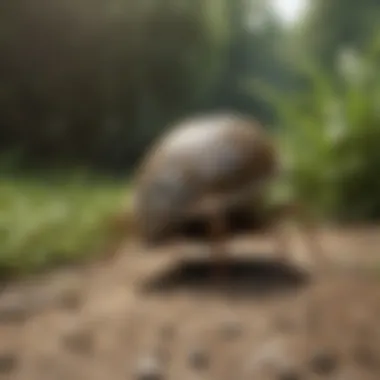

Through a deep understanding of stink bugs, you increase the likelihood of protecting your home and garden effectively. This knowledge is essential in maximizing the benefits of the DIY traps you’re about to construct. “Know thy enemy,” as they say, and in this case, knowing how stink bugs operate is half the battle.
The Need for Trapping
Stink bugs, those uninvited guests that seem to arrive just when the weather starts to warm up, can wreak havoc in our homes, gardens, and even on our nerves. Understanding the necessity of trapping these pests is crucial for anyone who wants to maintain a comfortable home environment. Homeowners often think of stink bugs as mere nuisances, but their impact can extend far beyond just being a very small annoyance.
Impact on Home Environment
Imagine returning from a long day and walking into your living room, only to find a stinky bunch buzzing around your windows. This can be more than just an unpleasant experience; it can also lead to other issues. Stink bugs, particularly the brown marmorated variety, can damage crops, flowers, and even structural elements in your house if they invade in large numbers. These critters can change how you interact with your space, making it feel less like a sanctuary and more like a battleground.
Moreover, some individuals may suffer allergic reactions to these pests. The saliva of stink bugs can trigger respiratory problems and skin irritation, especially in sensitive persons. Ensuring that your home stays stink bug-free can drastically improve your overall well-being at home.
Traditional Control Methods
When discussing pest management, it’s necessary to acknowledge traditional control methods. Many homeowners often turn to chemical sprays and exterminators. However, such approaches could introduce unwanted toxins into your home, potentially affecting both your family and furry friends. Moreover, these methods may not always yield long-lasting results. For every bug you zap, three seem to take their place. It’s a constant struggle.
Moreover, there’s a gap in many people’s knowledge about the life cycle of these pests. Knowing whether to spray in the spring versus trapping in the fall can make all the difference. Traditional methods might not address the root cause of the problem, leading to frustration as stink bugs persist.
Benefits of DIY Solutions
This is where DIY solutions come into play. Constructing your own stink bug trap offers several advantages:
- Cost-Effectiveness: DIY options often use materials that are readily available at home, keeping costs minimal.
- Safety: Homemade traps avoid harmful chemicals, making them safer for children and pets.
- Targeted Approach: When you create your own traps, you can tailor them to the specific issues you face, whether that’s high traffic areas or particularly problematic species.
- Satisfaction: There’s an undeniable satisfaction in crafting your own solution. Not only does it save money, but it also allows for control over your pest management.
Trapping shouldn’t just be a reaction to an infestation; it should be part of an overall strategy for maintaining a serene living space.
In contrast to traditional methods, these DIY solutions emphasize sustainability and a personalized approach. They ensure that you take control back from these pesky invaders while minimizing impact on the environment. By understanding the pressing need for trapping stink bugs and the benefits of making your own traps, you pave the way for a more peaceful home.
Materials Needed for Trap Construction
Basic Supplies Overview
Having a grasp of the basic supplies you’ll need before diving into trap construction is essential. Here’s a list of key materials:
- Containers: Glass jars or plastic bottles serve as effective bases for traps. Their smooth surfaces make it easy for stink bugs to enter.
- Liquid attractants: A mix of water, dish soap, and vinegar can act as an enticing bait. This is crucial for luring stink bugs into your trap.
- Sticky adhesive: If you're inclined to try sticky traps, non-toxic adhesive papers can effectively capture pests without any fuss.
- Screen mesh: This material is helpful if you're building traps that allow air circulation but keep the stink bugs in.
By gathering these materials ahead of time, you not only save yourself from unnecessary trips to the store but also ensure that your trap will work as intended.
Tool Recommendations
The right tools will make your life much easier when constructing a stink bug trap. Here’s a shortlist of useful tools:
- Scissors or a utility knife: These are vital for cutting bottles or containers to the desired size. A clean cut ensures that bugs won't escape.
- Drill or screwdriver: Useful for adding holes or making adjustments. Proper drilling can allow for ventilation or drainage, depending on your design.
- Measuring cup: When mixing liquid attractants, accuracy can ensure that the solution is potent enough to mimic the scent that insects are drawn to.
- Marker: Handy for marking measurements or guidelines on surfaces before cutting.
The combination of the right materials and tools not only streamlines your construction process but can drastically affect the effectiveness of your stink bug trap. Don't forget that having a solid plan and choosing quality items will result in a far superior pest control solution, keeping your home a stink-free zone.
Pro-tip: Always be sure to check your local resources for availability of non-toxic materials and tools. Not only does this support your construction, but it also minimizes environmental impact.
Designing Your Trap
Designing your trap is a pivotal aspect of managing stink bugs effectively. By creating a trap that not only attracts these pests but also efficiently captures them, you stand a better chance of maintaining a pest-free environment in your home. It’s crucial to balance functionality with simplicity. A well-thought-out trap reduces frustration and enhances your implementation success.
One of the foremost considerations in trap design is understanding the behavior of stink bugs. These pests are naturally drawn to various stimuli—especially light and moisture. By utilizing these preferences, you can create traps that lure them in like moths to a flame.
The benefits of a tailored design can't be overstated. A personalized trap means you can target specific areas where stink bugs are most prevalent, thereby increasing capture rates. It also allows you to control the presentation—making it less obtrusive to the eye. Lastly, the capability to easily refill or clean your traps is essential. After all, a dirty trap is about as useful as a leaky bucket.
Simple Jar Trap
The simple jar trap is among the most accessible options for homeowners. With such traps, you only need a few household ingredients. Grab a glass jar, water, and some dish soap. The bait can be as basic as household food scraps. Simply half-fill the jar with water, add a few drops of dish soap to break the surface tension, and position it near areas where these bugs are likely to meander. The soap traps the bugs, preventing their escape.
- Pros:
- Cons:
- Easy to construct
- Inexpensive
- Reusable with regular maintenance
- Might need frequent emptying based on capture rates
- Not always foolproof against all stink bug species
Tip: Position the jar in areas where light might attract stink bugs, such as near porch lights.
Bottled Trap Mechanism
The bottled trap mechanism takes advantage of a simple plastic bottle, which can be found right in your recycling bin. Begin by cutting the top section off a standard two-liter soda bottle. Invert the top portion back into the bottle's bottom part to create a funnel. Fill the base with water and dish soap as before. This design is advantageous because it reduces the chance of escape and lures stink bugs with its dark interior.
- Steps:
- Benefits:


- Cut the top of the bottle and remove the cap.
- Invert the top and reinsert it into the base.
- Secure it with tape if needed.
- Add your trap mixture of water and soap.
- Funnel design limits escape routes
- Easy to spot and empty when necessary
Sticky Trap Construction
Constructing a sticky trap relies on a more tactile approach. For this method, you'll need a sturdy piece of cardboard coated with a strong adhesive. The key is to place it in a strategic location, ideally near a warm light source that draws the late-night nuisances. However, ensuring it’s not in areas that might expose pets or children is crucial.
The creation of these traps requires a little more careful consideration, particularly regarding the type of adhesive used. You can find commercial sticky materials at your local DIY stores or use a DIY glue-based solution, although the latter may not hold up as effectively over time.
- Features to include:
- Size: Make it large enough to catch multiple bugs at once.
- Visibility: Position in areas with good traffic flow from stink bugs.
Using these various designs allows for flexibility in approach. Homeowners should feel confident in mixing and matching elements from each trap type based on their specific home environment and pest issues.
Assembly of the Trap
Building your own stink bug trap is not just a fun DIY project; it can also significantly reduce the annoyance these pests bring into your home. Proper assembly means the difference between a trap that works and one that merely takes up space. The assembly phase involves careful consideration of materials, design principles, and efficient construction techniques. In doing so, you ensure the effectiveness and longevity of your DIY trap.
Consider the importance of precision in assembly. If components do not fit together well, the effectiveness of the trap decreases. Moreover, a well-constructed trap can withstand the outdoor elements if placed outside. This durability is crucial to maintain a functional pest control solution without constant adjustments.
Step-by-Step Instructions
- Gather All Your Materials: Start by collecting all necessary materials. Depending on the design you’ve chosen, you might need jars, bottles, screens, glue, or sticky boards. Having everything ready makes the process smoother.
- Prepare Your Main Container: For jar traps, make sure to remove any labels and wash out the container to prevent chemicals from residue altering the lure effect.
- Create an Entry Point: Make sure to cut or create an entry hole in your trap but ensure it isn’t too large. The idea is to let stink bugs in but not allow them to escape. Using a simple hole saw can provide a clean finish.
- Select Your Lure: If you're using bait, place it inside the trap. You can use overripe fruit, sugar water, or even a mix of soap and water. This creates a scent that will attract the bugs.
- Seal and Position: If you are building a more complex trap, ensure every piece is tightly secured, using glue if necessary. Position the trap according to placement strategies discussed earlier, targeting areas where stink bugs are most likely to enter your premises.
- Test the Trap: Finally, observe your construction to see if adjustments are needed. If stink bugs are not entering, consider tweaking the lure or repositioning the trap.
"An effective trap is one you set and forget, but only if you assemble it correctly."
This step-by-step process is vital. Each stage adds up, and attention to detail pays off. The role of assembly greatly contributes to how efficiently the trap serves its purpose.
Common Mistakes to Avoid
As you construct your stink bug trap, being mindful of common pitfalls can save you time and effort.
- Not Sealing Openings Well: One of the biggest blunders is leaving too many openings. This can allow stink bugs to escape after being trapped.
- Using Ineffective Baits: Overlooking the importance of bait can lead to a futile setup. Always opt for attractants known to lure stink bugs.
- Poor Location Choices: Setting your trap in the wrong area might be a waste of effort. Always assess hotspots properly before installation.
- Neglecting Maintenance: Just because you have a trap doesn't mean you can ignore it. Check it regularly, especially during peak seasons.
- Rushing the Assembly: Taking shortcuts or hurrying can result in a trap that fails to capture bugs effectively. Patience is key!
Avoiding these mistakes will enhance the functionality of your DIY stink bug trap, providing greater satisfaction and efficiency.
Placement Strategies
When it comes to constructing a DIY stink bug trap, placement is the name of the game. Even the best trap can fall flat if it’s not situated properly. Think of it like fishing: the right bait won't do much good if you're not casting your line where the fish are. Similarly, targeting stink bugs effectively means understanding where they hang around, which will ultimately improve the rate at which they end up in your traps. Here’s a closer look at how to identify these hotspots and the guidelines for placing your traps optimally.
Identifying Stink Bug Hotspots
To effectively trap stink bugs, you first need to identify the areas they frequent. These little pests love places that provide warmth and shelter. Here are some common hotspots to consider:
- Sunny Areas: Stink bugs are drawn to warmth. Areas around windows, doors, and siding that receive a lot of sun are prime spots.
- Vegetation: Gardens, particularly those with plants like tomato and peppers, attract stink bugs as they feed on them. If you have a vegetable or flower garden, this could be like inviting them for dinner.
- Near Light Sources: They can be led by lights at night, similar to moths. Position traps near porch lights or outdoor lamps, especially during warm months when they’re most active.
- Entry Points: Check areas where you notice them getting into your home—like around cracks in the foundation or gaps in windows. These entry points are usually bustling with stink bugs trying to make their way inside.
By paying attention to these hotspots and observing their behavior, you can set your traps in the right places to catch them effectively.
Optimal Location Guidelines
With your hotspots identified, it's time to consider the best practices for placing your traps. Here are some guidelines to keep in mind:
- Height Matters: Stink bugs usually fly low. Position your traps about 1 to 2 feet off the ground for the best results.
- Avoid Clutter: Don’t place traps in overly cluttered areas. Stink bugs can easily hide among debris, so you want to keep traps where they can be seen and reached.
- Be Mindful of Wind: If placing traps outdoors, choose sheltered spots. Wind can blow your trap away or shift it out of the area where the stink bugs are funneling.
- Experiment with Locations: Don’t hesitate to move your traps around. If they’re not catching much, try different areas until you find a hotspot that works.
- Seasonal Adjustments: As the weather changes, so does bug behavior. For example, during the fall, they might seek out warm spots, while in the summer, they could be more dispersed throughout the garden. Adjust placement accordingly.
Placing your traps with intention can make a world of difference in their effectiveness.
"Proper placement is the backbone of a successful DIY stink bug trap. Without it, all efforts might end up being for naught."
Keeping these strategies in mind, homeowners can not only enhance their pest control efforts but also engage with their environment in a proactive way, reducing reliance on chemical solutions. This approach not only keeps your home more comfortable but also plays a part in maintaining a well-balanced ecosystem.
Monitoring and Maintenance
Keeping track of your DIY stink bug traps is only half the battle; the other half is ensuring they function at peak performance. Regular monitoring and maintenance play a pivotal role in the effectiveness of your traps. Over time, debris can accumulate, and the trap might require adjustments to remain attractive to stink bugs. Not just a mere check-in, this process gathers insights, prompting adjustments based on what works and what doesn’t. Missing out on this practice can lead to diminished capture rates, which is the opposite of what any tired homeowner wants.
Regular Check-ins
A regular check-in schedule can be the difference between a thriving trap and an ineffective one. The frequency of these check-ins can differ based on the time of year and the trap design, but a good baseline might be once every few days during peak stink bug season.
- What to Look For: Check the trap for any captured stink bugs and assess their condition. Notice if the trap is filled to capacity or if the bait needs replenishing.
- Consider Weather Impact: Changes in weather can affect bug behavior. For instance, during hot days, stink bugs might be more active, while cooler weather can send them hiding.
- Evaluate Positioning: If you aren't catching anything, consider shifting the trap around. Perhaps a little sunlight or a less crowded corner would entice them more. Adjustments like these can significantly improve the success rate.
Keeping a log of your findings may seem tedious but can provide valuable insights over time. Patterns may emerge, showing when the bugs are active or revealing which traps are more successful than others.
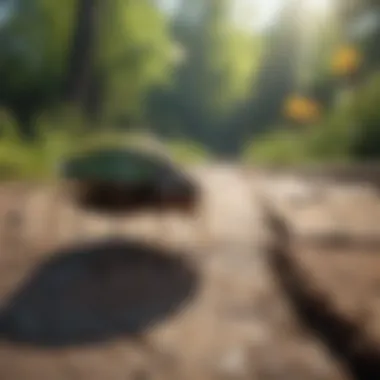

Cleaning the Trap
Cleaning your stink bug trap might not be the most glamorous task, but it is critical. A clean trap not only improves efficiency but also ensures a more humane treatment of these pests. Here’s how to go about it:
- White Vinegar Solution: Mixing equal parts of water and white vinegar can be remarkably effective. This solution not only disinfects but can also help remove any residual odor that may deter future stink bugs.
- Frequency of Cleaning: Aim for a deep clean every couple of weeks, especially if the trap has seen heavy use. Regular degreasing won’t just keep it looking neat; it will maintain an inviting environment for any wandering stink bugs.
- Dry Thoroughly: After cleaning, let the trap dry completely. Traps that retain moisture may attract other unwanted pests or create an unappealing smell, effectively turning into a deterrent rather than a beacon.
"A clean trap is a happy trap. Without proper monitoring and maintenance, a good trap may lose its appeal."
Ensuring your traps are both checked and cleaned routinely will not only maximize your trapping success but also alleviate the nagging worry of stink bugs rekindling their presence in your home. By putting in the effort now, you can comfortably kick back and enjoy peace of mind later.
Evaluating Trap Effectiveness
Evaluating the effectiveness of your DIY stink bug trap is crucial for several reasons. First and foremost, it allows you to understand how well your trap is doing its job. Stink bugs can be quite a hassle, especially when they invade homes en masse. So, knowing whether your trap is successful can help you save time and resources. If the trap isn't capturing many bugs, it might indicate a need for change in design or placement.
Also, keeping an eye on capture rates offers insights into stink bug behavior. If the trap seems to be capturing fewer bugs as the season progresses, it may signal that the bugs are adapting or that there's a shift in their movement patterns. Monitoring these details can guide future pest management strategies, enabling you to fine-tune your approach without resorting to harmful chemicals.
Understanding Capture Rates
Capture rates are a central pillar in evaluating your trap's performance. This starts with simply counting how many stink bugs your trap has caught over a specific period. It provides raw numbers which can be enlightening. For effective evaluation, consider tracking capture rates on a daily or weekly basis—this granularity can shed light on both the trap's efficiency and stink bug activity trends.
A well-functioning trap should ideally capture a significant number of stink bugs, suggesting its design and placement are effective.
Here are some aspects to consider while assessing capture rates:
- Time of Year: Different times of the year tend to have varying populations of stink bugs. So track how capture rates change with the seasons.
- Time of Day: Some might notice that certain times yield better capture—for example, dusk may see a spike.
- Trap Location: Keeping tabs on where you place the trap can reveal hotspots or areas needing attention.
Once you gather this information, compare your findings with the norms for your specific region. This will help you contextualize your results more accurately.
Adapting Strategies Based on Results
After evaluating capture rates, the next step is to adapt your strategies based on your results. If your trap isn't meeting expectations, take a close look at several elements: the design, the bait used, or the trap's location. Each of these can significantly influence performance.
Here are some suggestions for what to change based on your findings:
- Design Modification: If you notice low capture rates, consider altering the trap design. Maybe experiment with different shapes or materials. Each tweak might cater better to stink bug behavior.
- Bait Adjustment: The lure you’re using could be the key. Stink bugs are attracted to certain smells. If the chosen bait isn't doing its job, it might be time to switch it up.
- Change of Location: Sometimes, simply relocating the trap can yield better results. If the initial spot isn’t capturing much, try moving it to another area where you’ve seen stink bugs before.
Lastly, keep a record of these changes and their associated results. This will not only help in your current endeavor but can serve as a reference for future pest management strategies.
Environmental Considerations
When tackling the issue of stink bug infestations, it’s crucial to take a closer look at environmental considerations. Understanding how our methods impact the ecosystem can help us devise better pest control strategies that are effective yet considerate of the surroundings. This section will shed light on the broader implications of trap construction, beyond merely squashing pests.
Impact on Non-target Species
One of the most significant aspects of any pest management strategy is the collateral damage it may cause to non-target species. Many homeowners may not realize that traps designed solely for stink bugs can unintentionally affect beneficial insects. Insects like ladybugs and bees play a vital role in pollination and controlling other pest populations.
- For instance:
- Using sticky traps may inadvertently catch these helpful allies.
- The presence of pheromone lures can attract more than just stink bugs, drawing in other insects that are harmless or even beneficial.
It's important to consider the location and type of traps used. For example, placing traps close to flowering plants may lead to capturing pollinators. Strategies like creating raised traps or implementing barriers can minimize such unintended captures. It’s essential to strike a balance between reducing hassle from stink bugs and maintaining the health of our ecosystems.
Sustainable Practices
In today's world, sustainability is a buzzword but understanding how to implement it effectively is what matters on the ground. When thinking about DIY traps for stink bugs, incorporating sustainable practices should be top of mind.
- Here are some sustainable methods to consider:
- Using Recyclable Materials: Instead of running out to buy new supplies, check around your home. Glass jars, plastic bottles, or even old containers can be repurposed into effective traps.
- Natural Attractants: Many potential trap designs benefit from ingredients commonly found in the kitchen. Consider using sugar water or vinegar, which are both safe for the environment and effective in luring unwanted bugs.
- Composting Traps: If you find the stink bugs in your garden, create a composting section that naturally attracts and neutralizes them without harmful chemicals. Compost creates a habitat that can lure these pests while enriching your garden soil.
Ending
Creating a DIY stink bug trap is not just about catching a couple of these pests; it's about reclaiming your home and ensuring a comfortable living environment. Throughout this article, we explored why stink bugs can be more than just an occasional annoyance. They may wreak havoc on gardens, invade living spaces, and somehow always show up right when you least expect them. With our comprehensive guide, homeowners are not simply passive victims of this pest. You have the power to take back control.
Summary of Key Points
1. Understanding Stink Bugs:
Learning about stink bug behavior is crucial. By recognizing their patterns, you can effectively set up traps where they are most likely to wander.
2. Materials and Design:
From basic jars to more sophisticated setups, the materials you choose can greatly affect the efficacy of your traps. Each design serves a specific purpose and can cater to a range of environments.
3. Placement and Maintenance:
Proper placement matters. Knowing where to position your traps can mean the difference between a full catch and a trap that gathers dust. Regular maintenance ensures effectiveness over time.
4. Environmental Impact:
Understanding the pitfalls of trap placement, including the effect on non-target species, is key for environmentally responsible pest management.
Future Considerations for Pest Management
Looking ahead, the strategies employed for stink bug control may need to adapt as new information emerges about pest behavior and environmental considerations. It's crucial to stay informed about sustainable practices, including:
- Community Awareness: Collaborating with neighbors can amplify your efforts, as stink bugs often move in groups. Sharing methods and successes may enhance overall efficacy.
- Research Developments: Keep an eye on new findings regarding pest management techniques. Science is always evolving and new insights could inform more effective traps or alternative pest control methods.
- Adapting Techniques: Based on your trap's performance, don't hesitate to tweak your methods to improve catch rates or minimize harm to other species.
By understanding these key points and considering future implications, you position yourself not just to tackle your stink bug problem but to foster a long-term strategy that is sustainable and effective. After all, prevention is often the best policy.


